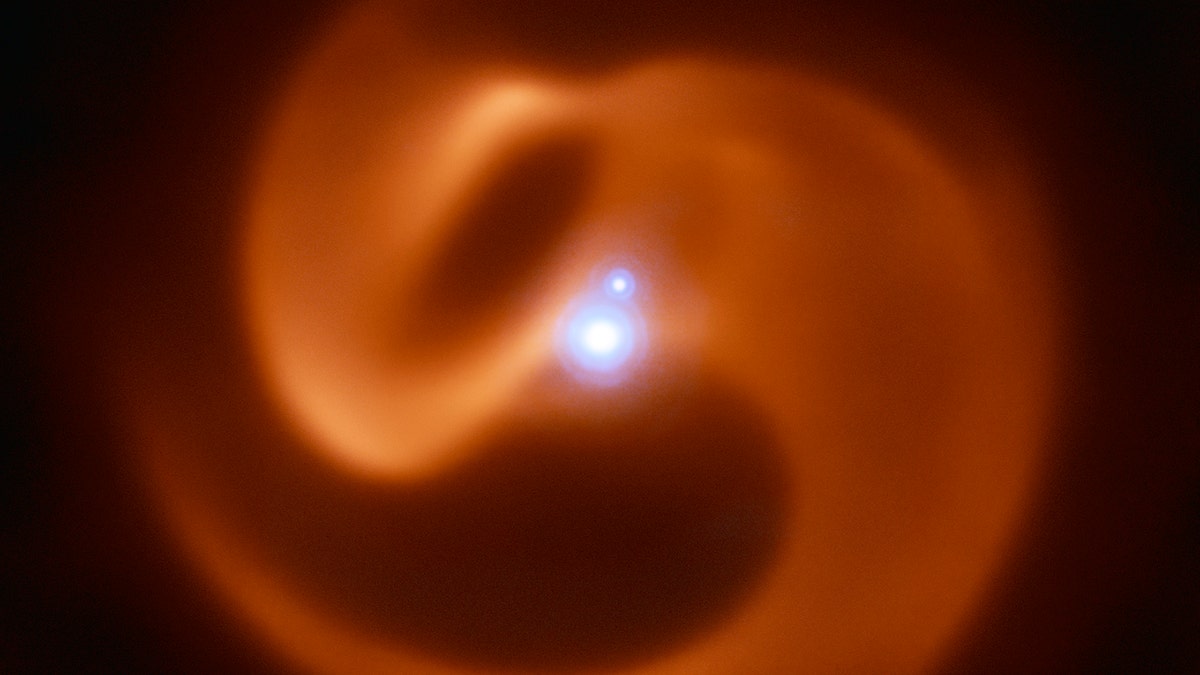
The VISIR instrument on ESO’s VLT captured this stunning image of a newly-discovered massive binary star system. Nicknamed Apep after an ancient Egyptian deity, it could be the first gamma-ray burst progenitor to be found in our galaxy. (Credit: ESO/Callingham)
A star spinning "extremely fast" has been spotted by scientists who say the interstellar object is at risk of exploding.
It's one of a pair of stars that could be involved in one of the universe's biggest explosions, experts suggest.
Scientists say the previously unknown star system is wrapped in an "elegant spiral dust cloud", making it look "spectacular".
At its heart is a pair of massive Wolf-Rayet stars, according to an international team of researchers who published the findings in the Nature Astronomy journal.
Wolf-Rayet stars are special in that they're among the hottest in the universe.
They blast out powerful winds of hot gas, and represent the last stage of most massive stars – before "exploding as a supernova."
The star system is believed to be located around 8,000 light years away from Earth.
That's roughly half a billion times farther than our own Sun.
According to scientists, the winds between the two stars form dust.
As the stars orbit each other, this dust takes on "elegant spiral pinwheel shapes".
"It remains a mystery how dust – similar to soot from a candle – forms in such harsh environments," said Professor Paul Crowther, of the University of Sheffield, who was involved in the study.
"But this newly discovered system is the most beautiful case seen to date."
The system was found using the Very Large Telescope in Chile and Anglo-Australia Telescope in Australia.
And it was photographed at the European Southern Observatory in stunning detail.
Experts discovered that the star system is producing "incredibly fast" winds that are 100,000 times quicker than a hurricane on Earth.
This wind speed is typical for a Wolf-Rayet star.
But what's interesting is that researchers found that the dust cloud itself is more slower.
This difference between the speeds of wind and dust is important. It suggests that the stars are "spewing out faster gas" at the poles – and slower gas at the equator.
"One way for such different winds to happen is via critical rotation," said Dr. Benjamin Pope, of New York University.
Critical rotation is when a star reaches such a speed that it begins losing mass along the equator.
This phenomenon is necessary for most "models" of supernova – an enormous stellar explosion – to be accompanied by a gamma-ray burst.
This "fiery death" would is the "most energetic explosion in the universe", according to experts.
This story originally appeared in The Sun.
